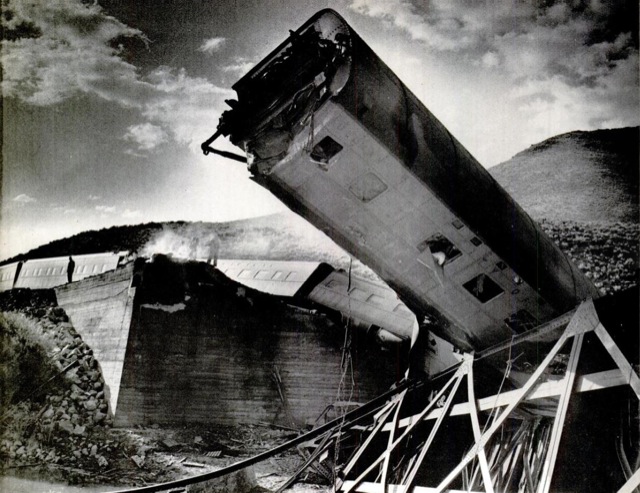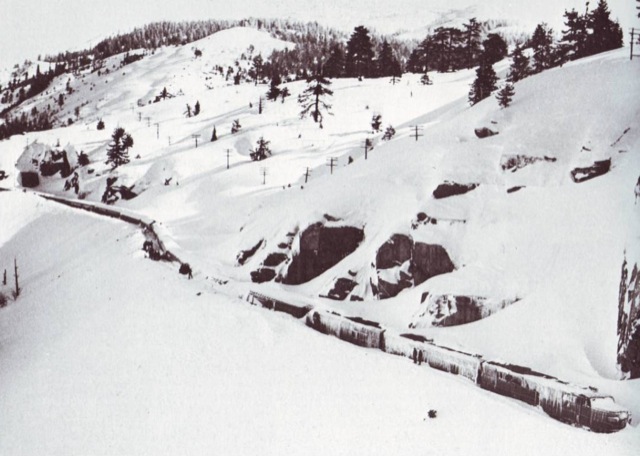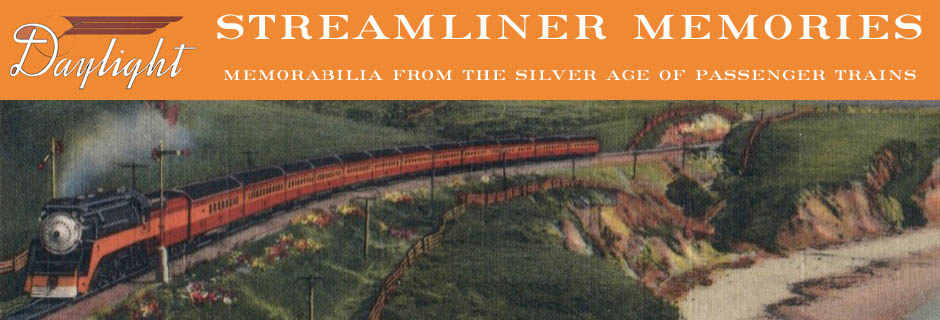The City of San Francisco was in national headlines twice, once just before the war and once a few years after. Both events took place on Southern Pacific tracks. In the first instance, the train was in a spectacular wreck that killed 24 people, most of them dining car workers who were preparing the car for breakfast the next morning.
The official report on the August 12, 1939 disaster concluded it resulted from sabotage, which set a war-jittery nation’s nerves on edge. However, some people insisted that it was simply a case of the train going too fast, implying that the railroad made up the sabotage claim in order to absolve itself of liability. In any case, no saboteurs were ever found and the railroad’s offer of a $25,000 reward for information leading to the conviction of the vandals apparently still stands.

Click image to download a PDF of a two-page article from the August 28, 1939 Life magazine about the 1939 wreck.
A writer named Don DeNevi wrote a 1977 book about the incident named Tragic Train. While the book contains many fascinating photos, rail fans say it is filled with errors and should not be considered the final authority on the subject.
The train’s second encounter with unwanted publicity took place in January 1952, when the train became pinned down by a snowstorm near Donner Pass in the Sierra Nevada. The locomotives and steam-heated cars quickly froze to the tracks and could not be budged even when a steam locomotive and snowplow reached them. As described in this Trains magazine article, the entire train was stuck for six days, but fortunately the railroad was able to evacuate passengers after just three days.

Click image to see a larger view.
The following newsreel tells much of the story as well.
